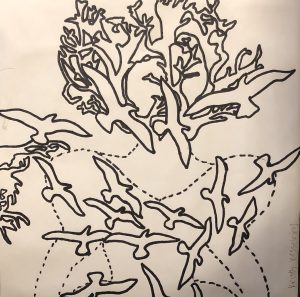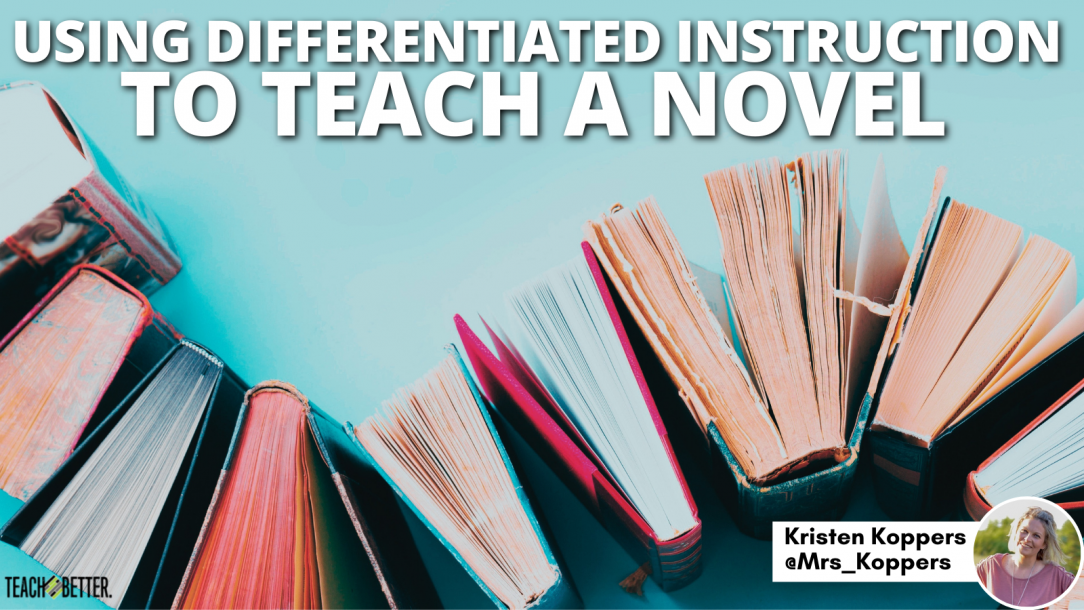TL;DR:
- Introduce the author first, and let students know why they are reading this particular novel and what the background of the story is.
- Teach essential questions, themes, motifs, and symbolism ahead of time, especially with difficult texts.
- Include visual art with their reading.
- Allow students to differentiate their pace.
Using differentiated instruction in the classroom does not have to be tedious or time-consuming. This is the profession that we chose to teach. These are the skills to carry in and out of school. They want to see the value in their education, not just pass through the years. Teaching is the opportunity to be creative with the curriculum.
I wrote the book Differentiated Instruction in the Teaching Profession because I believe that we can change how we teach. We may not have the opportunity to change the ‘what’ in teaching. We can definitely change the ‘how’ in teaching.
Let me explain:
I am an ELA secondary education teacher who teaches students how to write effectively both formally and informally. However, I also teach them how to deconstruct the reading. I believe students do not necessarily need the review of a plot structure in high school. There is more to a novel than the novel itself.
While teaching sophomores, we read the Columbian story, Chronicle of a Death Foretold, by Gabriel Garcia Marquez. Marquez’s book is that of a murder of a Colombian man by two brothers protecting the family name. No matter what type of genre the book fits into, there is an importance of introducing the novel to the students.
I have seen teachers hand out a reading assignment to students with little to no introduction. One thing that I am sure of is that students want to know why the reading is assigned.
I believe that we can change how we teach. We may not have the opportunity to change the ‘what’ in teaching. We can definitely change the ‘how’ in teaching. Click To TweetIntroducing a Reading Assignment
Not all reading has to have an elaborate plan in order to introduce an assignment. When teaching a novel in class, I focus on the author first. Students learn about the author prior to reading the novel. The ability to research the author’s legacy by incorporating it into the lesson is far more important than a handout about the author. Searching for video clips, photos, and information from multiple sources just adds to the authenticity in teaching.
It’s also important to share the date of the year the reading is written. This way it gives the students an understanding of any historical references. (Side note: Novels are given out after the introduction of the unit). Discussion of when the novel is written and when the novel takes place is definitely important and needs to take place before or during class discussions.
Step 1: Create an essential question for students to respond.
Students will complete an open-ended essential question relating to the reading. For Chronicle of a Death Foretold, a question that students respond to: “How do you determine how a character’s experiences shape their views of self and others?”
Students have about five minutes to answer the question. As part of the “bell ringer” in the day’s lesson, we discuss the question more in-depth and the student responses. By doing this, it creates the introduction to the unit but also gives them the opportunity to share their thoughts about the subject prior to reading. It’s also a way to know if a student understands the question. As questions like this one may be part of the unit, the bell-ringer helps clarify the focus.
Step 2: Introduce the author(s) of the reading.
Introducing the author (which does entail a little research on the teacher’s part prior to the lesson) is a great way to increase motivation for the reading. Because I have many visual learners, creating a PowerPoint or some kind of visual representation helps students learn.
The PowerPoint is to give additional information to my students in order to encourage them to want to read. I go beyond author connections to focus on the story behind the story. Teaching Chronicle of a Death Foretold is also teaching about the reasoning the author(s) wrote the story.
Step 3: Explain the motifs, themes, and/or symbolism ahead of time.
There is no wrong or right way to teach literary devices in writing. I found that explaining the motifs, themes, and symbolism ahead of time helps students understand the novel a bit more as they read. Not many teachers will agree with this approach; however, it is what’s best for the students. I found that teaching the themes ahead of time for novels or readings that are harder to understand than others is beneficial. Students can still understand the literary devices by searching the reading for support as proof.
[scroll down to keep reading]
Step 4: Use visual art to help create a balance in the lessons.
Using visual art in lessons increases knowledge of the content. Finding the right video clips as supplemental material for my lessons is an intricate part of how I teach. The video clips, images, and even interviews increase knowledge.
Step 5: Reading the novel.
Teaching the novel and reading the novel is different in the way I see it. Students can read a story but not understand it. Even giving them questions about the novel does not prove that they are reading it. As a way to differentiate the reading, they have a reading schedule that fits their time. Throughout the week, we discuss several points in certain chapters as a class.
Everyone has his/her own way to teach; it’s important to take the time to know your students‘ learning abilities prior to assigning any work. It’s not only the creativity that helps students learn but implementing that creativity.

The use of Differentiated Instruction on a final project connecting the novel to a school musical using a form of metamorphosis.



About Kristen Koppers
Kristen is an educator, Edumatch author, blogger, and presenter. She teaches ELA in secondary education as well as an adjunct professor at a local junior college. Kristen has been teaching for twenty years and has a Master of Arts in English (M.A.) and a Master of Education in Administration (MA. Ed.). She certified as a National Board Certified Teacher in 2009 and completed her recertification in 2019.
Kristen is the author of Differentiated Instruction in the Teaching Profession (2019) #DITeaching and The Perfect Puppy (2020) #ThePerfectPuppyEdu. Find out more information about Kristen at: www.kristenkoppers.wix.com/kop



